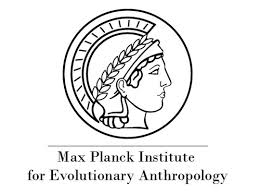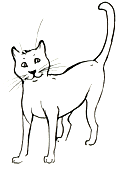
Abstracts
Thurston Cleveland Hicks & Hjalmar Kühl (Max Planck Institute for Evolutionary Anthropology)
Humans and African Great Apes-An Uneasy Coexistence
In our joint presentation we will review the relationship between humans and great apes in a number of different contexts in Africa. We will combine a larger scale perspective on the various threats great apes are facing with selected case studies highlighting the situation of great apes on a local scale and specific ecological and anthropogenic context. We will start by summarizing the threats great apes have likely faced for most of their evolutionary past as well as the more recent threats that have emerged over the last decades. This includes hunting for bushmeat and pet trade, infectious diseases and habitat loss caused by logging, mining, subsistence and industrial agriculture. Great apes react to some of these threats with changes in behavior. In remote areas where chimpanzees are not hunted or otherwise harmed by humans they often do not show fear of them (the ‘naïve chimpanzee’ phenomenon). However, in areas where apes are hunted or where they live in close proximity with humans they become very elusive, can resort to crop-raiding or come into conflict with humans. In these latter areas, among the human populations concerned a wide range of attitudes exist towards chimpanzees. These range from veneration of chimpanzees as ancestors, to active dislike of the apes as agents of corruption. Chimpanzees also show signs of adapting their behavior when forced to live alongside humans, either becoming more aggressive (i.e. in the Bulindi area of Uganda) where they are not preyed upon by the locals, to becoming almost completely silent in areas where they are on the human menu (i.e in the Buta region of DRC). Such dynamics will become of increasing importance for conservationists and researchers as more and more wild spaces are taken over by humans.

Mary Trachsel (University of Iowa)
Intersubjective Science: Primatology from the Jungle to the Ape-Language Lab
Primatology emerged separately in the East and the West, in both cases as a field science that acknowledges social connections between human scientists and the animals they study. Using methods of participant observation in the native habitats of their subjects, field primatology pioneers Kinji Imanishi, Jane Goodall, Dian Fosse and Birute Galdikas recognized other apes as social presences and, in doing so, practiced within science an “inter-subjective” or “relational” way of knowing. As laboratory scientists, primatologists observe nonhuman primates contained within human habitat, and thus they experience social ties with their subjects differently from their field science counterparts. Ape Language Research (ALR), a specialization within behavioral and cognitive primatology, illustrates the ongoing evolution of a primatological dialogue between objective detachment and subjective identification, between empirical knowledge (Wissenschaft) and anthropological recognition (kennen). ALR in both hemispheres has developed hand in hand with scientists’ advocacy for their subjects’ species. This philosophical and political development of scientific inquiry exemplifies a process of ecological consciousness-raising long advocated by environmental scientists and philosophers alike, from Arne Naess (“deep ecology”) to E.O. Wilson (“biophilia”).

Pär Segerdahl (Uppsala University)
Can an ape become your co-author? Reflections of processes of “becoming” in apes
My point of departure is an article in Applied Animal Welfare Science from 2007, in which Sue Savage-Rumbaugh lists three bobobos – Kanzi, Panbanisha and Nyota – as her co-authors. Some would object that this listing of co-authors says more about Savage-Rumbaugh’s enthusiasm about apes than about the bonobos’ actual capacities to function as co-authors. I want to suggest, though, that Sue’s stance is reflected not primarily in the act of listing the bonobos as co-authors, but in the long history of daily interaction with the bonobo group that preceded the listing and that made it possible for Kanzi, Panbanisha and Nyota to become bonobos who can function as co-authors (as human informants sometimes function as co-authors). I will use this example to discuss processes of becoming in apes, since I believe that the notion of “becoming” is more elucidatory than the notion of “learning” when it comes to understanding language acquisition in apes.

Immanuel Birmelin (Society for Animal Behavior Research e.V.)
How Primates See the World – Personality and Theory of Mind Human beings are characterized by their special mental abilities. No animal imitates so well as we do. We are able to recognize ourselves in a mirror already in an age of one and a half year. Thereby we show our imagination of ourselves. We can empathize with theoretical constructions and feelings of others and therefore we can fake and deceive them. These abilities led humans to the idea that they have a special position in the hierarchy of species. The lecture asks the question how similar to animals the humans are or how similar to humans the animals are. In my lecture I show examples how monkeys imitate, how different species react on their image in the mirror, how Orang-utans empathize with the human world of senses and how chimpanzees betray each other.

Judith Benz-Schwarzburg (Messerli-Research Institute Vienna)
Great apes – great theories – great challenges: cognitive kinship versus the status quo of human – great ape interaction
The aim of this presentation is to link perspectives from animal cognition with perspectives from ethics, animal protection and species conservation.
Especially within the last two or three decades, we have acquired a remarkable understanding of the cognitive relatedness between ourselves and the great apes. We now know that they use tools and form cultures, they are able to learn and communicate – even in human sign languages –, and they probably have a so-called theory of mind, which means that they are aware of some of their own mental states and the mental states of others. I will show some results on great ape cognition to build up an empirical basis for an ethical argument: based on such findings we can and should ask for welfare as well as rights implications of complex animal cognition. I will show how welfare and rights theories can accomplish this task and what claims have been made. Nevertheless, well-argued and powerful theoretical claims do not necessarily result in a change of the status quo. I will give one example of how we actually treat our cognitive relatives in the wild (pointing to the vicious circle of habitat destruction, bushmeat crises and violent conflict) and one example of how we treat them in captivity (the last chimpanzee show in Europe in Schwabenpark, Germany). I will argue, that it is precisely the gap between ethical claims growing stronger and stronger (even asking for human rights-like rights for great apes and some other species) and the way we actually treat these animals that is the main characteristic of animal ethics in the 21st century. It becomes more and more obvious, that we came up with some great theories for a stronger protection of the great apes while we face profound challenges that even come to a head.

Colin Goldner (Great Ape Project)
Basic Rights for Great Apes: The Great Ape Project
The Great Ape Project, initiated some 20 years ago by the philosophers Paola Cavalier from Italy and Peter Singer from Australia, calls for the Great Apes – that is: chimpanzees, gorillas, orang-utans and bonobos – to be granted certain basic rights on the grounds of their close genetic similarity to humans as well as their similarly complex cognitive, affective and social abilities. Basic rights, which are so far reserved for humans: The fundamental right to live, to individual liberty and to physical as well as emotional intactness, which actually covers all cases of great apes being affected by humans, such as hunting, circus, zoo, animal testing and destruction of their natural habitats. Great apes are to be granted the same moral and legal — i.e. enforceable — status, which every human being enjoys. Singer et al. convincingly established that the traditional discrimination of man and great apes is no longer sustainable in the light of scientific knowledge and therefore is to be morally discarded.
The lecture will be divided into two parts: first it will give an overview about historical aspects of the relationship between man and Great Apes in Europe, and, secondly, it will discuss the current development of the Great Ape Project, which, despite some initial success — New Zealand for instance completely banned experiments on great apes in 1999 — lost its momentum soon after and has been stagnating ever since without any palpable results.
In 2011 the project was given an official restart, supported by the Gemany-based Giordano Bruno-Foundation for the Advancement of Evolutionary Humanism. The chances to succeed are far better today than at the beginning of the 1990s, due to the fact that awareness of animal rights is world-wide far more advanced than it was 20 years ago, as witnessed by the many campaigns and organisations existing today. Furthermore, we now have completely new possibilities for networking and thus for exercising political pressure. One of the immediate goals of the relaunched project is to have fundamental rights for Great Apes implemented in the constitutional law of Germany. From there the idea — hopefully — will spread to other countries.

Andrea Donaldson (Colobus Conservation)
Human and Primate Coexistence in Diani Beach, Kenya. Conflicts, Solutions and Benefits
The forest ecosystem of the coastal areas of Kenya and Tanzania is listed as one of the top global biodiversity hotspots by Conservation International. With high levels of endemic and near endemic species, these forests abound with plants and animals found nowhere else in the world. Included in the primates are the nationally threatened Angolan black and white colobus (Colobus angolensis palliatus). This is a forest and woodland dependent species eating mainly leaves, and to a lesser extent flowers and fruits with a specially adapted digestive system for cellulose breakdown, typical of folivores. Their distinctive appearance has given them a unique place in local cultures and their reducing numbers is partly because they have long been hunted for their skins which have special significance in local African tribal customs.
Today however, the greatest threat to these primates is habitat destruction. In Kenya the once extensive coastal forests on which the Angolan colobus depend, has been reduced to a fragmented patchwork along a narrow coastal strip. This fragile resource is made up of gazetted forest reserves and conservation areas; community managed forests and woodlands, including culturally important sacred “kaya” forests; and privately owned forest and woodland patches. Sadly, forest loss and degradation is continuing due to pressures from agricultural expansion, urban development, tourism, tree cutting for firewood, charcoal, carving wood, and clearance for mining.
Colobus Conservation works in partnership with local communities to promote the conservation of the colobus, along with other primate species, and the unique coastal forest habitat on which they depend. Colobus Conservation implement innovative programmes focusing on habitat conservation and community linkages as well as human/primate conflict management, welfare, education and research that are transferable to many eco-systems. These will become increasingly important for field based conservationists and researchers striving to create a balance between human populations and wild spaces including the conservation of wildlife in suburban settings.
